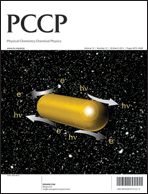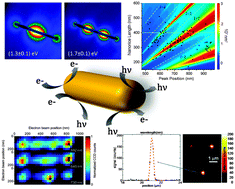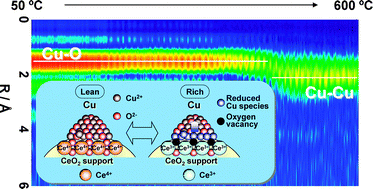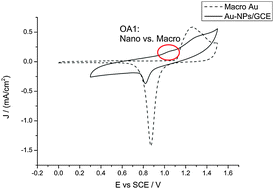Paul Mulvaney and co-workers investigate the optical properties of an end-to-end assembly of gold nanorods in their recent PCCP paper.
The group from the University of Melbourne used optical and electron microscopy to study the scattering properties of colloidal gold nanorods aligned end-to-end via dithiol coupling at the single particle level. They found that the nanostructures exhibited polarization-dependant optical properties, due to selective excitation of collective bonding and antibonding modes.
The authors were interested in how the angle between plasmonic structures affects coupling. They examined the coupling between both gold nanorod dimers and rod-sphere-rod trimers as a function of subtended angles of the dimer and trimer. They found that the intensity of the resonance in dimers and trimers depends strongly on the angles within the assembled structure. Additionally, they determined that the coupled longitudinal surface plasmon resonance of coupled Au nanorods exhibited a red shift as the number of rods in the chain increased.
Read this HOT article today:
Surface plasmon coupling in end-to-end linked gold nanorod dimers and trimers
Jatish Kumar, Xingzhan Wei, Steven Barrow, Alison M. Funston, K. George Thomas and Paul Mulvaney
DOI: 10.1039/C3CP44657C
If you enjoyed this article you will enjoy our themed issue on optical studies of single metal nanoparticles. Take a look!












 Emilie Ringe and co-authors have comprehensively reviewed recent progress in single particle studies of plasmonic nanostructures. They also highlight the exciting and very interdisciplinary future prospects for this field.
Emilie Ringe and co-authors have comprehensively reviewed recent progress in single particle studies of plasmonic nanostructures. They also highlight the exciting and very interdisciplinary future prospects for this field.




